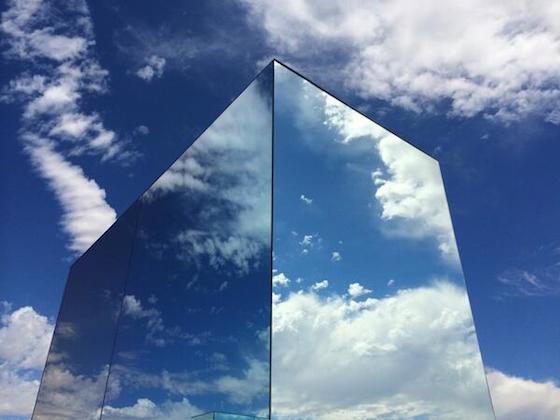!["I can fade [one screen] from blue into the red of the sunset, so that it disappears into the sky. Or I can paint the sky green and then fade it down into the green of the grass," Smith says. "It plays between these two worlds of projected light and the reality of the environmental light and the surrounding world."](https://dsmpublicartfoundation.org/wp-content/uploads/2014/04/la-et-cm-phillip-k-smith-reflection-field-560px.jpeg)
The installation is composed of five sculptural elements — four enormous squares and a towering rectangle standing nearly two stories high — in a grassy circle 100 feet in diameter. The five “volumes of light,” as artist Phillip K. Smith refers to them, are fully mirrored on the outside and will reflect their desert surroundings by day: lithe palm trees, a ring of mountains and curious visitors. At night the LEDs will glow from within, creating dramatic light-play that will drown bystanders in color.
A computer program that Smith and his team created will time the color progressions so that the reflections from the individual structures blend together in strategic ways. (This “color merging” is a key factor that sets Smith’s new work apart from “Lucid Stead.”) At the same time, the multicolored hues will play off of the natural environment, bleeding into the earth and sky.

